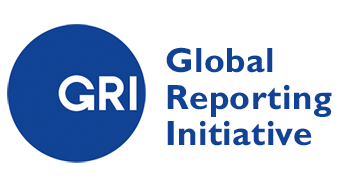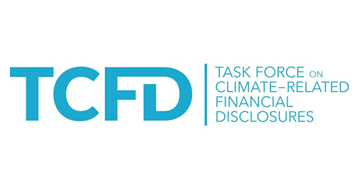Investors, customers, employees, and others are demanding transparency and accountability around ESG metrics, goals, and progress. With no universally accepted ESG reporting standards, however, meeting that demand takes some thought and effort to decide what ESG metrics work best for you.
Important ESG Metrics for Your Business
ESG metrics fall under three categories – environmental, social, and governance. Environmental criteria focus on the company’s impact on the planet, such as climate-change initiatives. The social element focuses on the way the company treats its people and the societies in which it operates. Governance refers to a set of organizational practices, controls, and procedures used to ensure the company is actually doing what it claims to do. Together, ESG metrics measure the effectiveness of the company’s ESG performance and how well that aligns with business goals.
Common ESG Metrics
Common metrics by category include:
Environmental
- Greenhouse gas emissions
- Air and water pollution
- Biodiversity
- Business circularity
- Deforestation
- Recycling and waste management
- Water security
- Energy efficiency
- Product carbon footprint
Social
- Diversity and inclusion
- Corporate social responsibility
- Data protection and privacy
- Labor standards
- Animal welfare
- Product safety
- Responsible sourcing
- Sustainable supply chain
- Conflict minerals
Governance
- Board composition
- Management diversity
- Shareholder rights
- Lobbying activities
- Executive compensation
- Accounting transparency
- Reporting and disclosures
- Conflict of interest
- Shareholder actions
- Investor relations
The metrics you choose to disclose should clearly align with the values and purpose of your organization. Factor in your priority stakeholders and the ESG metrics they want to see. And consider what your industry peers are reporting on to help stakeholders compare results between companies and make informed decisions.
While it may be tempting, don’t simply pick the metrics most favorable to you. What you choose to report on not only reflects your commitment to ESG principles, it demonstrates your dedication to improvement.
ESG Reporting Frameworks
More than a dozen main ESG-related frameworks are available, each with its own recommendations for what ESG metrics to report – also known as ESG disclosures – and how to report them. The frameworks are created by not-for-profit organizations, business groups, and others, and the recommendations and metrics can vary widely. While the frameworks typically specify metrics that a company should disclose – along with the format, and frequency – they generally don’t set targets for those metrics.
Three of the most commonly used ESG frameworks are:
Global Reporting Initiative (GRI) The GRI was formed in 1997 following public outcry over the environmental damage caused by the Exxon Valdez oil spill. The aim was to create the first accountability mechanism to ensure companies adhere to responsible environmental-conduct principles. That mission has broadened over the years to include social, economic, and governance issues.
The GRI was formed in 1997 following public outcry over the environmental damage caused by the Exxon Valdez oil spill. The aim was to create the first accountability mechanism to ensure companies adhere to responsible environmental-conduct principles. That mission has broadened over the years to include social, economic, and governance issues.
The GRI offers universal standards that are designed to apply to all organizations. There are complementary sector-specific standards for 40 sectors, including oil and gas, coal, agriculture, aquaculture, and fishing. The GRI also offers topic standards for waste, occupational health and safety, tax, and other topics.
Value Reporting Foundation (Merger between SASB and IIRC)
The Sustainability Accounting Standards Board (SASB) and the International Integrated Reporting Council (IIRC) merged in June 2021 to create the Value Reporting Foundation (VRF).
The VRF is a global nonprofit organization that helps companies connect financial, human, and sustainability data. Under VRF, organizations have access to three primary resources:
- Integrated Reporting Framework aims to accelerate the adoption of integrated reporting, reflecting the commercial, social, and environmental context. ESG metrics include material information about strategy, governance, performance, and prospects.
- Integrated Thinking Principles provide a structured management approach to adopting integrated thinking. It serves as a steppingstone to creating more value and enhancing decision making by boards and management.
- SASB Standards provide industry-specific disclosure ESG metrics to be included within the integrated report. The standards address sustainability-related risks and opportunities that may affect your organization’s financial condition, operating performance, or risk profile. With 77 industry standards available, organizations can track a wide range of ESG issues that are most sought after by investors.
The Task Force on Climate-Related Financial Disclosures (TCFD) Established by the Financial Stability Board, the TCFD’s recommendations center on creating effective climate-related disclosures within the financial sector to promote more informed investment, credit, and insurance underwriting decisions.
Established by the Financial Stability Board, the TCFD’s recommendations center on creating effective climate-related disclosures within the financial sector to promote more informed investment, credit, and insurance underwriting decisions.
The Task Force on Climate-Related Financial Disclosures focuses its climate-related recommendations around four main pillars:
- Governance: Is your organization’s governance structure set up to address climate-related risks and opportunities?
- Strategy: What strategies and financial planning do you have in place to address tangible material impacts of climate-related risks and opportunities?
- Risk Management: How does your organization define, analyze, monitor, and manage climate-related risks?
- Metrics and Targets: What measurements and ESG metrics do you use to assess material climate-related risks and opportunities?
Too Many Standards Means Nothing is Standardized
The large number of ESG frameworks is an issue itself. Each framework was developed independently and has its own focus and recommendations. The result is an often-confusing array of frameworks, metrics, and standards from which to choose.
Despite the large number options, no one framework currently offers a truly comprehensive overview of ESG metrics. As such, many companies choose to partially adopt multiple frameworks to guide their disclosures.
Whatever ESG metrics you decide to report on, use the same methodology year after year for consistency and credibility. And make sure your claims can withstand scrutiny. Public declarations are subject to audit and fact checking by stakeholders.
Until regulators weigh in with specific requirements, you are on your own to select the ESG metrics to disclose. Choose wisely.
For more on ESG reporting, download our e-book, Taking a Stand on ESG, and check out Riskonnect’s ESG software solution.



